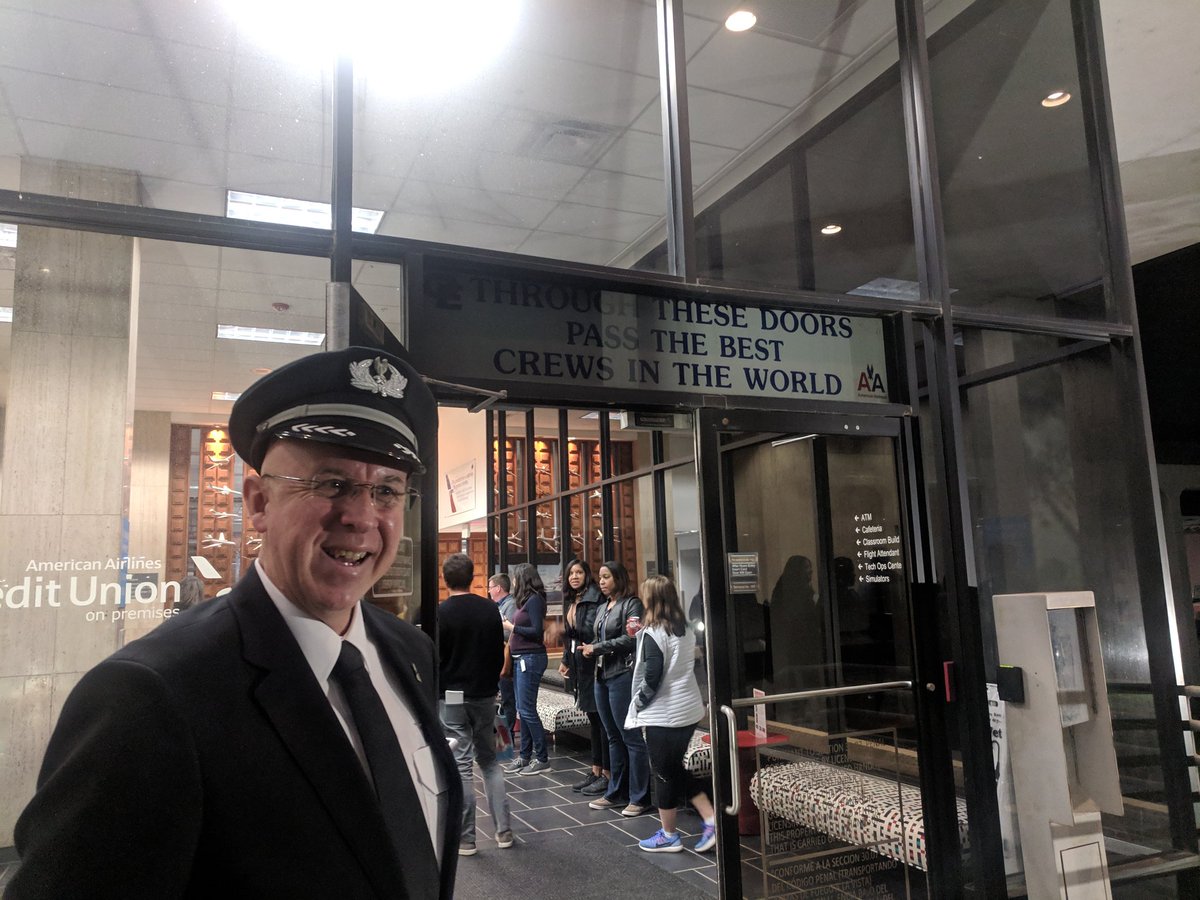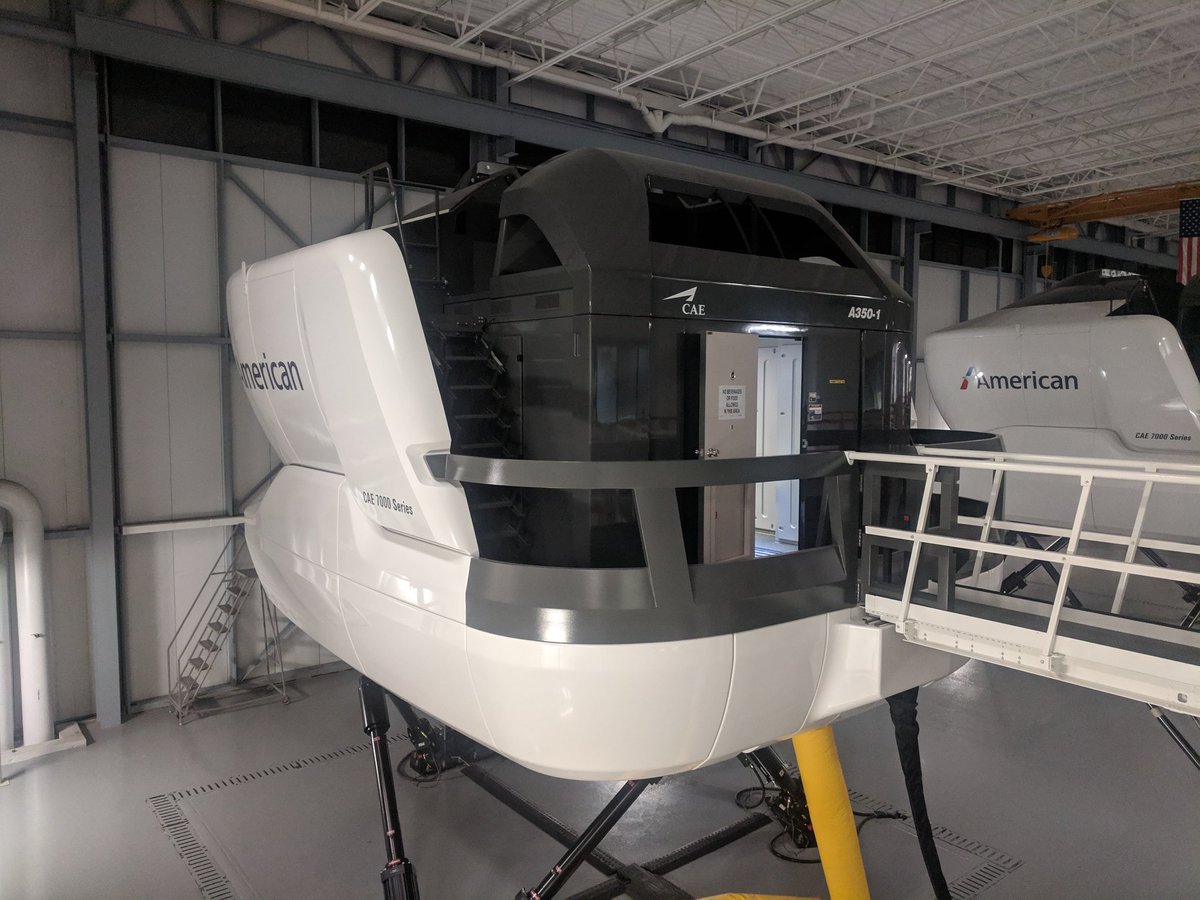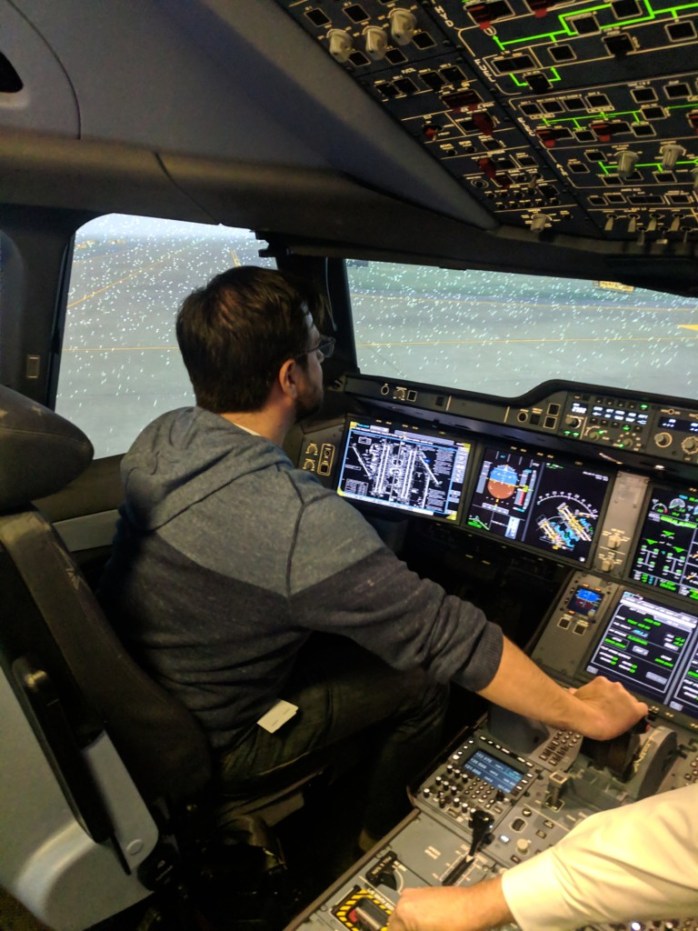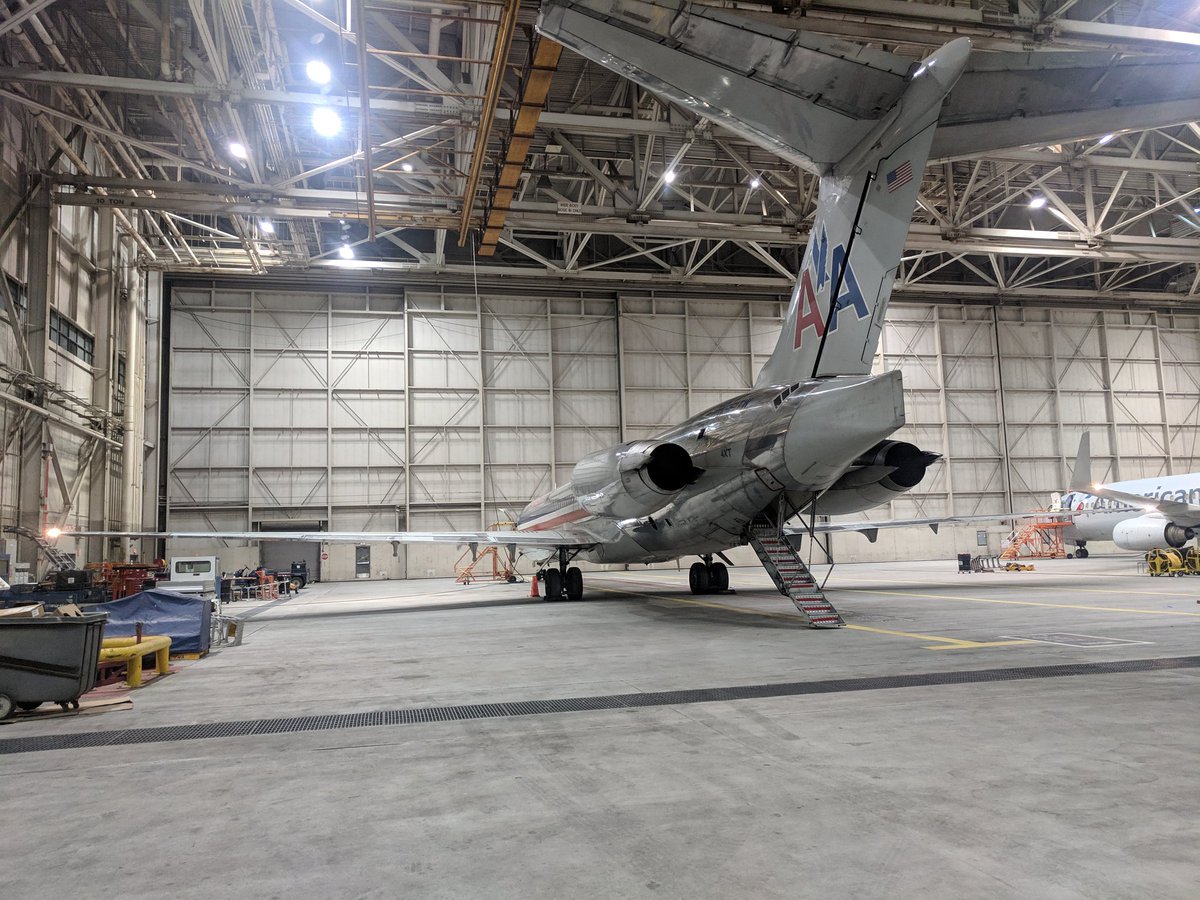Welcome to the second half of my long night with American. In my post about the first half of the night, I wrote about our time in the Integrated Operations Center (IOC). Today, I’ll pick up where exhaustion set in with a look at our visit to the flight simulators, maintenance hangars, and American’s DFW tower. (Note: All times Central)
[Disclosure: American provided flights and hotel for this event]
1:53am

Feeling rather proud of my airport code quiz victory, I felt a burst of energy to help shake the cobwebs out. (Tea helped as well.) We finally left the IOC and got a breath of the cool night air. Our next stop was across campus at the Flight Academy. It was time to play with simulators. Capt. John Dudley, Senior Manager and A330 Fleet Captain met us at the door with a surprisingly alert and friendly smile considering the time of night. This is an older building, and you can definitely feel it when you walk in.
I quizzed Capt. Dudley as we wandered the construction-filled maze of corridors filled with ugly carpet, offices, and 35 simulators. He began his career flying F28s for Piedmont, and has obviously made it through several mergers. As we talked, I realized we had arrived in the simulator bay where our chariot was waiting.
2:04am

The fact that there is an A350 simulator in this building is pretty strange. After all, American canceled its order, but the commitment to the sim was made before that happened. Capt. Dudley had spent a great deal of time on the A350 and was a test pilot with Airbus on it. So he might go take it for a test drive when he’s feeling nostalgic, but nobody else within the company has any use for it. American had been renting it out to other airlines, but it is expected to hit the road later this year. In the meantime, it served as a very expensive toy for us to play with.
3:08am

I’m busy fighting a driving snowstorm as I try to taxi around DFW. This isn’t reality, of course, but it sure feels like it. Each of us got a chance to fly the simulator (with motion turned off, sadly), and it was my turn to try. Even without motion, the feeling was surprisingly realistic. I found myself holding on to the seat when others were flying even though we weren’t going anywhere. After unsuccessfully searching for the button to release the chemtrails, I landed flawlessly. Granted, Capt. Dudley was watching very closely and wasn’t going to have it any other way.
4:35am

We had finally left the campus behind and headed over to the airport to see some real metal, er, and composites. Our first stop was American’s primary line maintenance base on the west side of the airport. Over here, American has four separate hangars, one which Mesa currently uses. It also has another one on the other side of the airport.
Badih Delati and Eduardo Portorreal , both Managers of Aircraft Line Maintenance at the DFW hub guided us over to Hangar 4 first. That’s where the widebodies are serviced. There were three aircraft in there when we arrived. The 757 on the left was doing an engine run-up while the power-hungry 787 on the right was running its APU, ready to head out.
4:37am

In the back was a 777-200 with issues. They had to replace a pump, but they were having trouble getting access to the area deep up in the wheel well. (I’m not sure if there was something particularly challenging about this issue or not, but it wasn’t going quickly.) The wheel well was wide open while the mechanics worked on strategies to solve the issue.
5:02am

The 787 was still hanging out, so we hopped onboard to take a look before they moved the airplane on to a gate for a morning flight. There is a whole group of people (I believe two dozen or so) who come in early in the morning specifically to move aircraft from the hangars over to the right gates. They usually taxi the airplanes under their own power, but sometimes they’ll tow the planes. The problem with towing is that air traffic control knows you’re slow, and they’ll make you wait to cross runways.
5:19am

We walked over to Hangar 3, the one reserved primarily for narrowbodies. There was the usual in there, Airbuses, etc. But wait… what’s that in the back? That beautiful, shiny, ex-TWA, Long Beach-built MD-80 was just inviting us to stare. Built in 1999, this was one of the last ones made. Even with that, it looked tired… though maybe not as tired as I felt at that point.
5:21am

Those back stairs were down, and there was no way I was going to miss the opportunity to walk up. Fortunately, Badih said that wasn’t a problem. The inside looked worn and tired, as you’d expect for an airplane with only a few months left to fly. It also smelled like my childhood. I don’t know what it is that smells different on older airplanes, but it brings back all kinds of memories.
5:23am

We left the MD-80 in all her glory. It was time to ride over to the terminal. Imagine how long it takes to go all the way around the runways and back up to the terminal. Then add in a couple of wrong turns by the driver. Then consider that the suspension was shot, so it was quite the rough ride. This was probably the toughest part of the night, and by the end, I was nearing the point of collapse. Just as I thought all hope was lost, we arrived at Terminal A.
6:05am

Our mission was to go to the new DFW ops tower for American, but first, we had to get past security. The bus dropped us off at a line without Pre Check. Since I was traveling that morning, I walked with one other person over to the Pre Check side, and I instantly regretted it. The line was very long and it took over 15 minutes to get through. On the other side, I felt better. We had still beat the rest of the dwindling group (Brian and Scott had left us hours earlier.)
7:14am

We had been ushered into a conference room in the “tower” when we arrived. Coffee and pastries were waiting, but I just wanted to sleep. We sat down and heard a presentation from Cedric Rockamore, Vice President Hub Operations DFW and Matt Eggers, Managing Director of DFW Control Center Operations. We were a bit late, so we had missed the morning call waking up the operation, but we could still learn how things worked.
I put “tower” in quotes, because it’s no longer an actual tower. There’s a non-descript door near gate A20 that leads up to a big room. American has been here for just over a year, and it uses this to control the ramp for the entire airport. (At least, it will soon when it takes over the half of D and all of E that it doesn’t currently manage.) How do they do this from a dark room? As you can see, they use hundreds of cameras to give a view of just about anything you could possibly need. What happens if technology fails? The old tower is still there, ready to be put to work on a moment’s notice as a fully-functional back-up. That was our next stop, but first we had to say goodbye.
By this time, most people were toast. Those heading back to the hotel hopped in a bus and hit the road, but I was flying out so I had nowhere to go. That left me, Andy Luten (from Andy’s Travel Blog), Andrea Koos from the comms team, and Matt to head up to the old tower for a little spotting.
7:31am

The old tower is located between Terminals A and C. There’s a door at one of the breaks in the moving sidewalks that leads outside and into the separate tower entrance. Heading up to the top, the door opens on a deserted room that still has all the equipment necessary in case it needs to be pushed back into service.
You can tell the team was clearly going to miss being in a place with actual windows, and a great view at that. The windows, however, are tinted, and that was a bummer… until I realized we were going to walk upstairs to the deck on top of the tower.
7:56am

I could have stayed up there all day despite the drizzle and cold and my complete and total exhaustion. The tower gives a spectacular view right down the line in the alley between Terminals A and C. We saw all kinds of movements including the Allegheny retro livery A319 and a Delta A220, but of course, it was this MD-80 that captured my eye.
7:57am

Did I mention I love the look of the MD-80? Just checking.
At this point, we were done. I had made it all night, but now I just needed to get over to gate C33 for my flight home. I took the SkyLink train and got to the gate just as boarding was beginning. Talk about great timing.
I’ll end this here and talk about the flight home in my trip report to come. This was a very busy but well-paced event that allowed American to really open up a part of the operation that you don’t see often. This didn’t really address any of American’s current operational issues, but that wasn’t really the point. It was still a fascinating evening. Thanks to the comms team for letting us take a look inside.
